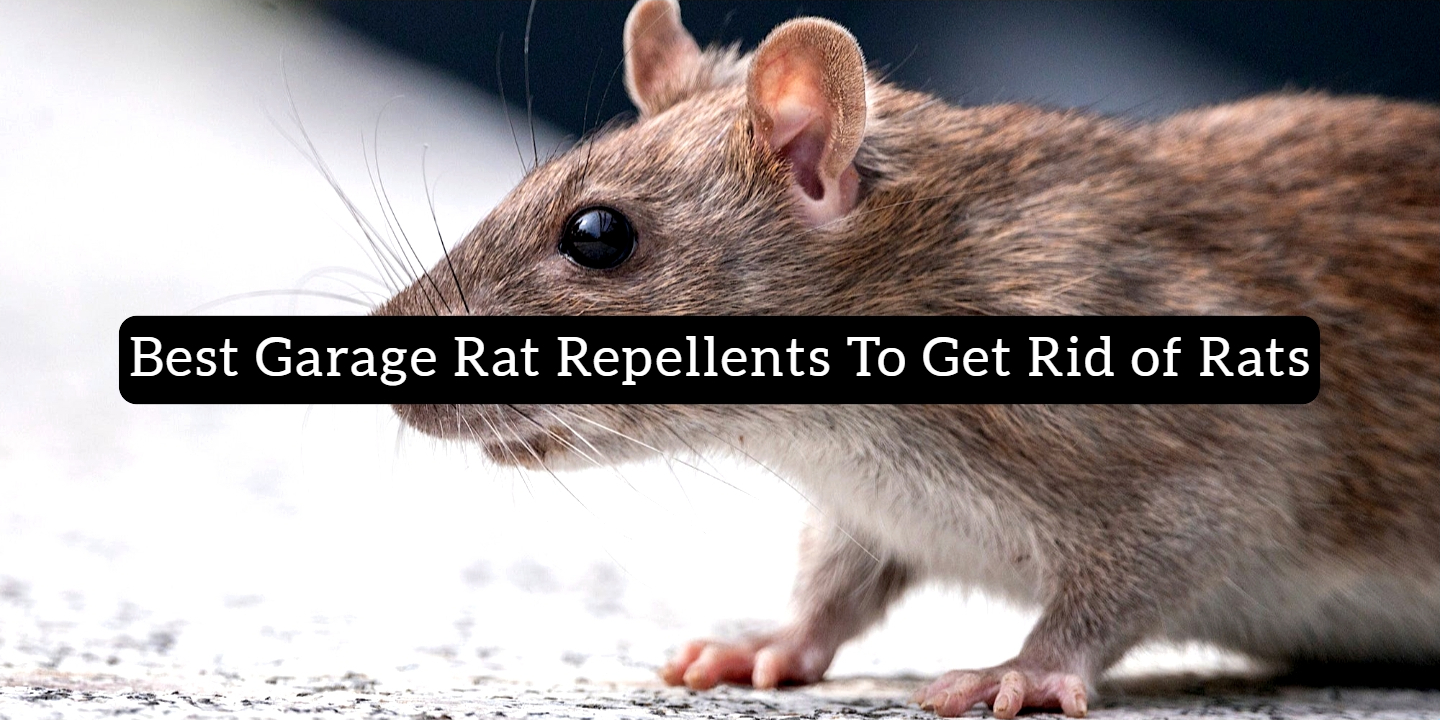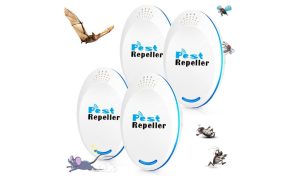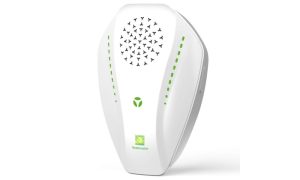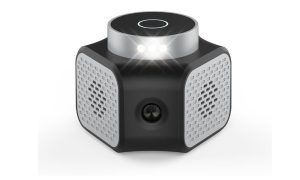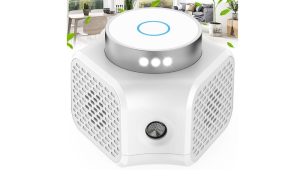Does the thought of rats scurrying through your garage send shivers down your spine? You’re not alone. These unwanted critters not only damage property but also pose health risks.
That’s why we’ve scouted the best garage rat repellents to get rid of rats you could try. These repellents will send the rats packing, and without resorting to harsh chemicals.
One size doesn’t fit all, so we’ll cover diverse types of repellents there. We’ll delve into all the details and help you pick the right weapon in your rodent war. Let’s dive in!
JLLOM Ultrasonic Pest Repellent Control
If you prefer non-toxic pest control methods, this repeller could be a good starting point. This will work especially great if you’re seeing occasional spiders or a few stray rats. It can help deter them before they become a bigger issue. Generally, it’s a much safer alternative for toxic repellents or traps. And less cruel, too.
Pros:
- Garage-Friendly: This one plugs right into a wall outlet, making it a gem for garages lacking plumbing or special features.
- Chemical-Free: It emits high-frequency sounds that are unpleasant to pests but inaudible to humans and most pets.
- Multi-Target: Ir tackles a wide range of garage invaders, from mice and rats to roaches, spiders, and even fruit flies.
- Easy to Use: No complicated instructions or messy setup here.
Cons:
- Limited Reach: Ultrasonic waves travel in straight lines and can be blocked by furniture or walls. You’ll likely need multiple units for larger rooms or areas with obstacles.
- Effectiveness Varies: Such repellents haven’t always been scientifically proven to be effective against all pests.
- Not for All Pests: It won’t work for larger animals like raccoons or squirrels that might enter your garage.
- Duration: The effectiveness of such tools can diminish over time as pests get used to the sounds.
Think Twice:
- Those with major infestations: If your garage is overrun with pests, ultrasonic repellents alone might not be enough. Consider professional pest control or combining this method with others.
- People with large garages: With limited reach, this might not be effective for expansive garages unless you use multiple units strategically.
- Those expecting instant results: Be patient! It might take weeks to see a noticeable difference, and even then, results can vary depending on the pest and environment.
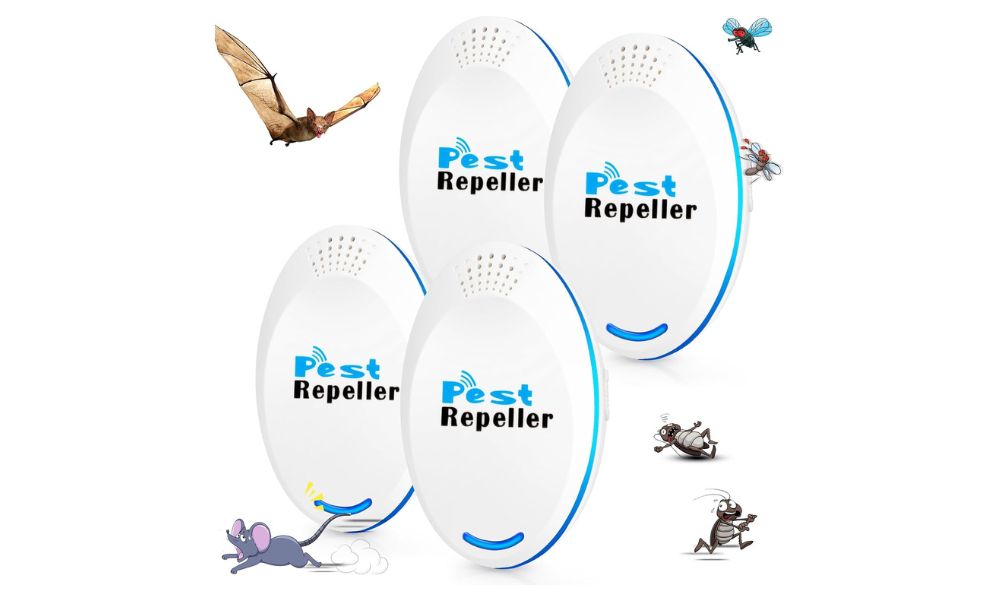
You may also like: DIY Mosquito Trap in Garage Tips
Daliyrepal Rodent Repellent Balls
This is a scent-based solution to your rat problem. Prefer a non-toxic approach? These natural peppermint balls might be a good alternative to harsher repellents. If you’re seeing a few unwelcome mice or rats in your garage, these balls offer a low-effort, pet-friendly way to deter them.
Pros:
- Garage-Friendly: These balls emit a natural peppermint scent that’s pleasant to humans but supposedly sends shivers down rodent spines.
- Safe Squad Approved: All the granules are safely locked inside the balls, posing no harm to humans, pets, or plants when used as directed.
- Low Maintenance: Simply place the balls around your garage at 125-square-foot intervals, and they’ll work their magic for a good 30 to 90 days.
- Targeted: These specifically target mice and rats, common garage invaders. While not a universal pest solution, they might be just the right note to deter your unwelcome furry guests.
Cons:
- Limited Reach: Unlike ultrasonic options, scent doesn’t travel well through walls or open spaces. So they might not be effective in large or poorly sealed garages, or if pests can enter through other areas.
- Scent Subjectivity: Success can depend on the specific pest species and their scent preferences.
- Not For Open Spaces: Forget using these outdoors or in open areas like carports. They’re made for enclosed spaces where the scent can concentrate and deter pests.
- Not a One-Hit Wonder: They might not solve a major infestation on their own. Consider combining them with other methods like sealing entry points or traps for a more comprehensive approach.
Think Twice:
- Those Battling a Rodent Army: These balls might not be enough for a full-blown infestation. Consider professional pest control or stronger solutions in such cases.
- Large or Open Garages: The limited scent reach might not be effective in expansive or poorly sealed spaces.

Neatmaster Ultrasonic Pest Repeller
Here’s a convenient, chemical-free way to try and deter unwelcomed furry guests from your garage. If your garage has a moderate rat problem, the green or blue settings offer a potentially silent solution. There’s also an adjustable frequency feature for targeted pest control.
Pros:
- Dimple This compact plug-in repeller fits easily into your garage, taking up minimal space.
- Multi-Frequency: You can try three ultrasonic settings to match your pest pressure. Green and blue tackle minor to moderate infestations with inaudible sounds, while red tackles severe cases with audible sounds (beware, pets and humans might hear it!).
- Low-Maintenance: Simply set the desired frequency and forget it!
- No Chemical: It’s a chemical-free alternative, relying on sound waves to deter pests.
Cons:
- Limited Reach: Ultrasonic waves, like whispers, don’t travel through walls. For larger garages or multiple rooms, you’ll need numerous units to ensure complete coverage.
- Red Alert for Ears: The red setting emits audible sounds, which might be disruptive to humans and pets. Consider using it only in unoccupied areas or opting for lower frequencies.
- Performance: The effectiveness against all pests isn’t always guaranteed. Success might depend on the species and the severity of the infestation.
- Fading Forte: Over time, pests might get used to the sounds, reducing their effectiveness.
Think Twice:
- Those With Major Infestations: For large or persistent rodent problems, ultrasonic repellents alone might not be enough.
- Sensitive Ears: If you or your pets are easily disturbed by sounds, the audible red setting might not be suitable.
- Large, Open Garage: It won’t be effective for expansive garages unless you use multiple units strategically.
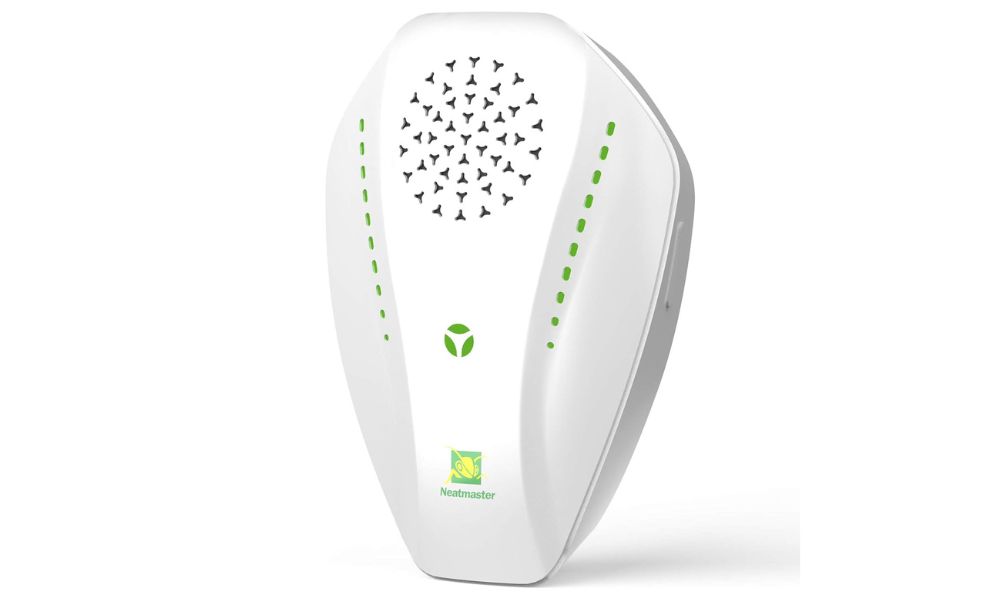
Check also: 7 Best Garage Tire Inflator Reviews
Comigal Mice Repellent
This one uses ultrasonic sound and LED strobe lights and aims to deter unwelcome rodents from your garage. The plug-and-play design and lack of refills or messy cleanup appeal to those who want a low-maintenance approach to pest control. Plus, the limited reach of ultrasonic waves makes this option more suitable for smaller, open garages where strategic placement minimizes obstacles.
Pros:
- Convenience: It simply plugs into an outlet, eliminating setup hassles.
- Dual-Action Defense: It combines ultrasonic waves, supposedly disruptive to mice, with flashing LED lights for added disorientation.
- Low-Maintenance Solution: It will work by itself so you can forget about maintenance.
Cons:
- Effectiveness: Mice might adapt over time, so you may need to try other things.
- Limited Reach: Ultrasonic waves travel in straight lines, potentially blocked by walls or furniture.
- Targeted: Primarily effective against mice. It might not deter other common garage invaders like squirrels, insects, or larger animals.
- Potential Disruption: The flashing LED lights could be disruptive in quiet environments or for sensitive pets.
Think Twice:
- Homes with Sensitive Individuals: If you or your pets are easily disturbed by sounds or flashing lights, it’s not the best option.
- Diverse Pest Issues: If you’re dealing with various pests beyond mice, it won’t be a one-stop solution.
- Owners of Large Garages: With limited reach and potential soundwave blockages, it won’t be effective.
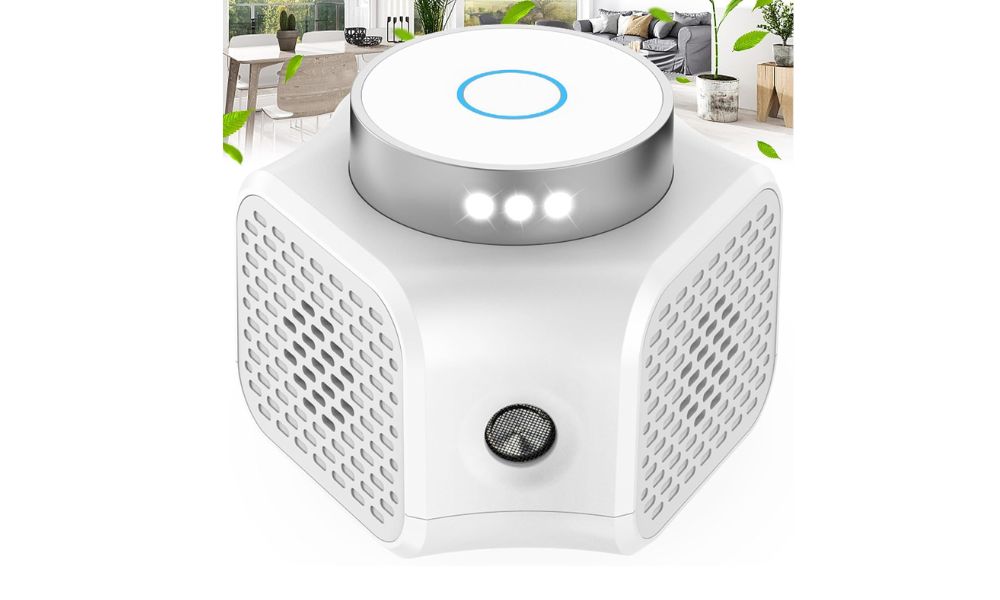
RibRave Rodent Repellent
In smaller, open garages where strategic placement can overcome soundwave barriers, this repellent might be more successful due to its compact size. It will work nicely if you have occasional rats crawling around, but not if you have a serious issue. It needs to be said, that its effectiveness is not guaranteed and might vary significantly.
Pros:
- Convenient: No plumbing or complex setups, so it’s readily deployable within a garage environment.
- Chemical-Free: It’s a safer alternative to harsh chemicals.
- Aesthetic: It can blend seamlessly into the visual landscape of your garage, unlike bulkier or visually unappealing pest control solutions.
Cons:
- Variable Effectiveness: The impact can vary significantly depending on the species, habituation to the sounds, and environmental factors.
- Limited Reach: These are easily blocked by obstacles like walls and furniture.
- Potential Pet Disruption: While marketed as pet-safe, some user reports indicate that pets can be disturbed by the ultrasonic sounds emitted by the device.
Think Twice:
- Diverse Pest Populations: Research and invest in repellents or methods specifically made for each pest you’re facing.
- Large Garages: Explore alternative methods like bait stations, traps, or professional services that can address potential soundwave blockages and reach wider areas.
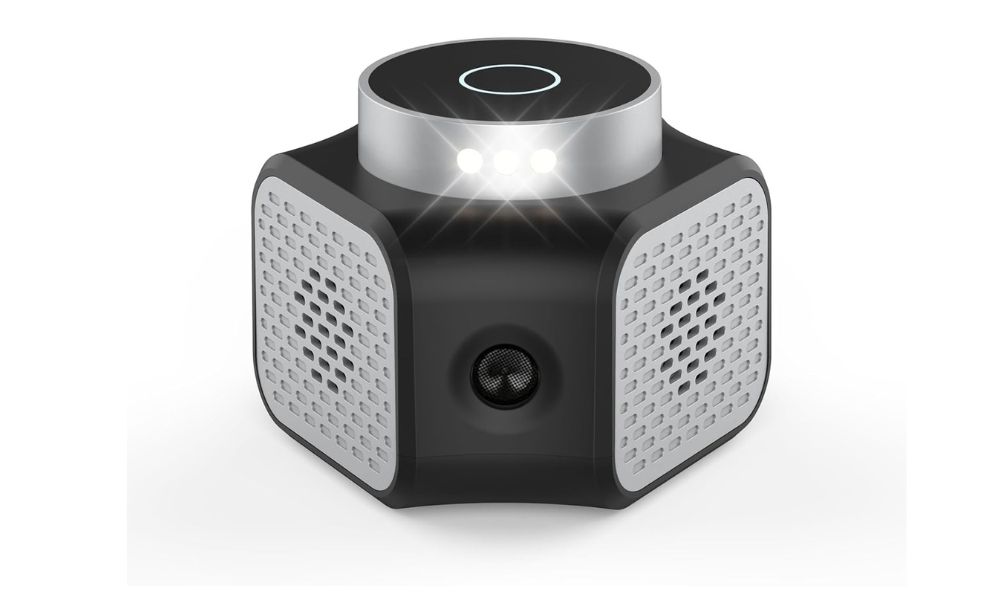
Have a look at: 15 Cool Garage Tool Storage Ideas
Loraffe Under Hood Animal Repeller
This tool aims to deter unwelcome guests using a combination of ultrasound and strobe lights. In compact garages where the coverage area isn’t a major concern, this repellent could be a viable solution. So if you’re seeing nibble marks or droppings, this low-maintenance option might be worth exploring.
Pros:
- Targeted: Made for under-hood protection, ensuring focused deployment within the garage environment.
- Dual-Action: Combines high-frequency ultrasonic waves and LED strobe lights, potentially offering broader effectiveness than single-method repellents.
- User-Friendly: A simple two-wire connection to the vehicle’s battery simplifies setup, minimizing disruption to your garage routine.
- Battery Protection: Automatic shut-off feature safeguards against car battery drain, ensuring reliable vehicle operation.
Cons:
- Unquantified Performance: Lack of specified coverage area and longevity data make it difficult to objectively assess its effectiveness in various garage sizes.
- Sensory: Ultrasonic sounds and flashing lights might not be suitable for all users or environments, particularly in densely populated garage communities.
- Hybrid Vehicle Exclusion: Not compatible with hybrid electric vehicles, limiting its applicability to a specific segment of users.
Think Twice:
- Those With Large Garages: Without knowing the coverage area, the effectiveness in larger garages remains uncertain.
- Those With Hybrid Vehicles: Investigate alternative repellents specifically designed for hybrid electric vehicles if applicable.
- Those Who Want Transparency: Users prioritizing detailed information about coverage and longevity should explore repellents with clearer specifications.
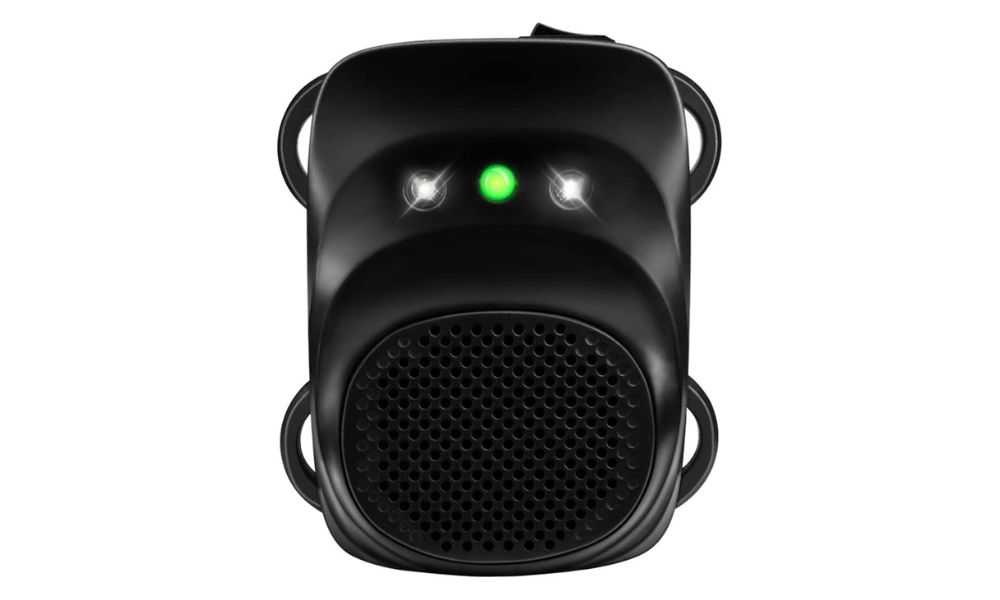
You may also check: 7 Affordable Garage Tool Chests
Victor Pestchaser Rodent Repellent
It’s a multi-unit pack of ultrasonic devices made to deter rats from enclosed spaces. This one provides potential value compared to buying individual units, appealing to users prioritizing affordability. Just keep in mind that there might be a potential need for additional units based on your garage size and layout.
Pros:
- Cost-Effective: The six-unit pack provides coverage for multiple rooms or a larger area at a competitive price compared to single-unit alternatives.
- Low-Maintenance: With a lifespan of 3-5 years per unit, this solution minimizes the need for frequent replacements and offers a potentially convenient approach.
- User-Friendly: The plug-and-play design simplifies deployment and avoids messy applications, ensuring minimal disruption to garage routines.
- Unobtrusive Design: The compact size and soft blue glow make the units relatively inconspicuous within a garage setting.
Cons:
- Uncertain Coverage Area: The lack of specific square footage information makes it difficult to assess suitability for larger garages or complex layouts.
- Obstruction Sensitivity: These are blocked by obstacles like walls and furniture.
- Targeted: It primarily focuses on deterring rats. If your garage harbors diverse pests like squirrels, insects, or larger animals, it might not be a comprehensive solution.
Think Twice:
- Those With Big Infestations: It won’t work if you’re battling a rat army.
- Those With Budgetary Concerns: It’s not pricey, but pest control services often provide comprehensive solutions with long-term guarantees, potentially balancing the initial cost over time.
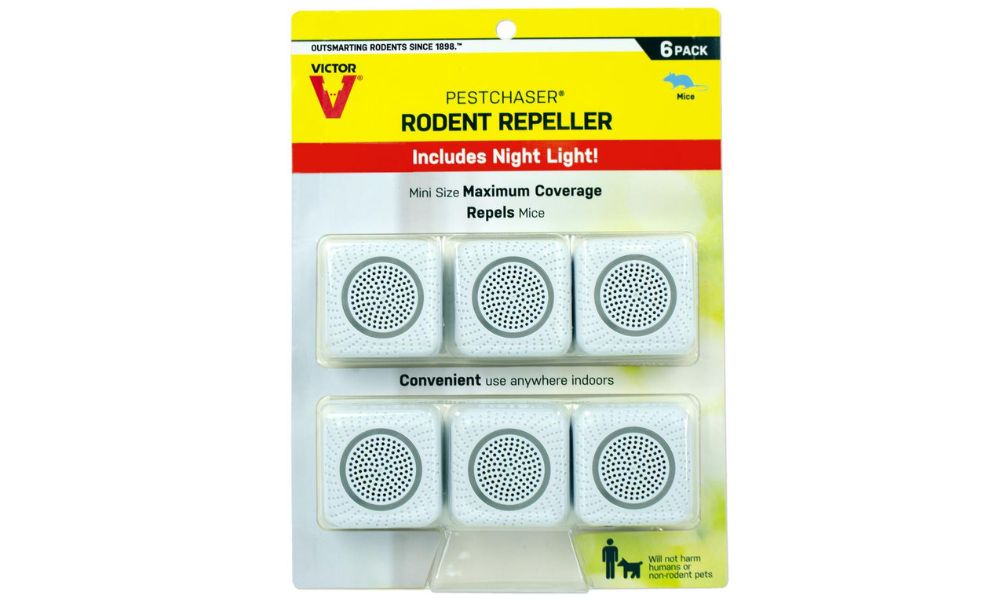
FAQ
What Are The Signs Of A Rat Infestation?
You may not see the rats themselves, but look for these telltale signs:
- Droppings: Small, dark pellets found near food sources, under furniture, or in drawers.
- Gnaw marks: On food packaging, wires, furniture, or walls.
- Holes: Rats can chew through wood, drywall, and even concrete.
- Rub marks: Greasy streaks left by rats as they squeeze through tight spaces.
- Sounds: Scratching, squeaking, or thumping noises, especially at night.
- Nesting materials: Shredded paper, fabric, or dried leaves in attics, basements, or behind walls.
Do Electronic Rodent Repellents Really Work?
Effectiveness varies. Some studies show they might repel certain rodents in ideal conditions, but results are often inconsistent. They usually don’t eliminate an existing infestation and could be ineffective against larger rats.

What Smells Deter Rats?
While some strong scents like peppermint oil, mothballs, or ammonia might temporarily deter, rats can adapt and become accustomed to them. These aren’t reliable or safe for long-term use, especially around pets and children.
Is Rat Repellent Safe To Use Around Pets And Children?
It depends on the product. Always read and follow all label instructions carefully. Many commercial repellents contain chemicals that can be harmful if ingested or inhaled.

